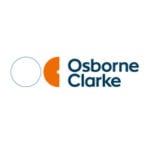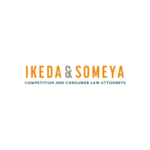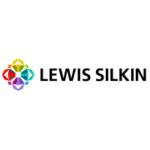-
Please provide a brief overview of the legal and regulatory framework governing advertising and marketing in your market. In particular, please explain if there is a self-regulatory system, a statutory system and/or ability for competitors or consumers to bring claims against advertisers.
Danish law on advertising and marketing is primarily regulated through the Danish Marketing Act (Markedsføringsloven). As Denmark is a member of the EU, she is also subject to harmonizing rules regulating marketing stemming from the EU. This is primarily through Directive 2005/29/EC (the Unfair Commercial Practices Directive). The Danish Marketing Act directly implements many of the phrases of the Directive.
Denmark also has laws besides the Danish Marketing Act that regulate specific instances or products and how they may or may not be marketed. For example, Denmark has a specific law on the prohibition of advertisements for tobacco products (Lovbekendtgørelse om forbud mod tobaksreklame m.v.)
Further, various guidance papers and decisions from the Consumer Ombudsman (Forbrugerombudsmanden) bear a large weight in shaping the rules on marketing and advertising, though they technically are not legally binding.
Cases on unfair advertising and marketing are normally handled through either the Consumer Ombudsman or the Maritime and Commercial High Court of Copenhagen, which is a specialized court for amongst others, Marketing Law. The Consumer Ombudsman is an independent public authority supervising compliance with, inter alia, marketing regulation. The Consumer Ombudsman can open a case against an undertaking based on complaints (that can be sent in by anyone, including in theory competitors) or ex officio. Decisions issued by the Consumer Ombudsman are legally binding and are almost always complied with.
Secondly, it is possible to file a lawsuit before the Danish Courts relating to a breach of the Danish Marketing Act. As stated in Section 32(1) of the Act, »Anyone with a legal interest in the matter may file a lawsuit for injunctions, orders, damages, and compensation […]«. This explicitly includes the Consumer Ombudsman.
-
Please comment on how active the regulators are in your market, in practice, when it comes to regulating advertising and marketing.
The Danish Parliament implements minor changes and additions to the Danish Marketing Act a couple of times per year: Since 3rd May 2017 the Danish Marketing Act has been amended 11 times. These are not fundamental changes as the logic of the Act must be in line with the EU-Directive on unfair commercial practices.
The Consumer Ombudsman, who has a large influence on the practical interpretation, implementation and use of the Marketing Act, is, however, very active. He is continuously releasing and amending various guidelines on general and specific situations as well as issuing a large number of decisions on how the Marketing Act is to be understood.
-
Do different rules apply to different media (e.g. television broadcast, streaming, online, cinema, print, out-of-home, email marketing, etc)?
Generally, the same rules are applicable to all commercial practices, i.e., they must not be misleading.
There can, however, be certain specific rules that apply to regulate whether or not marketing in a certain way is even allowed. If marketing is not disallowed, the Marketing Act applies.
Unsolicited email and text message marketing is generally prohibited under Section 10 of the Danish Marketing Act, which prohibits spam.
Advertising on television must be in accordance with both the EU Regulation on Digital services (2022/2065) for cross border advertising and the Executive Order on Audio visual services for national tv services. The Danish Radio and Television Board decides cases on advertising on national television channels and the mayor channels also has departments overseeing the adherence to the regulations for advertising. To some extent, this may be seen as an advertisement needing pre-approval.
The Danish E-commerce Act, Section 9, prohibits hidden marketing on the internet and social media (Section 6(4) of the Marketing Act contains a corresponding prohibition that is generally applicable to all marketing). According to section 9 all marketing material must be clearly identifiable as such. It must also be clear who is the sender of commercial communication , i.e. whose products/services are being marketed.
Outdoor advertisement is subject to regulations on where such advertisements may be placed. Generally, it may not be placed so that it is disruptive to nature.
-
Is it necessary to have advertisements pre-cleared/pre-approved in your market by a relevant authority, regulator or other body before they are published/broadcast, either generally or in relation to particular media, sectors, products, individuals/businesses, etc? If so, please provide a high-level overview.
Generally, there is no requirement of having pre-approval for an advertisement.
There are specific rules regulating whether outdoor advertisements are allowed. It often requires approval from the relevant local authorities.
-
Focusing on misleading claims/marketing, please explain how these are regulated in your market.
According to Section 5(1) of the Danish Marketing Act, a claim is misleading, if it contains false information or, by virtue of its presentation or otherwise, misleads or is likely to mislead the average consumer, regardless of whether the presented information is strictly factually correct. According to Section 6(1) of the Act, marketing may also be misleading by omission. This may be the case if the marketing material omits or conceals material information, or if it presents such information in an unclear or ambiguous manner.
One cannot make an exhaustive list of which factors may be considered of central or material importance in relation to a given service or product. The Danish Marketing Act gives the following examples:
- The existence or nature of the product;
- The main characteristics of the product;
- The extent of the seller’s obligations, the rationale for the commercial practice in question, and the nature of the sales process used;
- Statements or symbols of direct or indirect endorsement or approval of the trader or their products;
- The price, the manner in which the price is calculated, or any specific price advantage;
- The need for servicing, spare parts, replacement, or repair;
- The trader’s or their agent’s characteristics and rights;
- The consumer’s rights;
- The trader’s compliance with a code of conduct that they claim to be bound by;
- Confusion with a competitor’s product, trademark, or trade name; or
- Any marketing of a product in one Member State as being identical to a product marketed in other Member States, where the product in question has significant differences in composition or characteristics, unless justified by legitimate and objective factors.”
In recent years, jurisprudence has confirmed that also factors relating to the creation of a product, for example, its burden on the environment, may be considered of central importance.
Marketing is considered misleading if the message conveyed may lead to confusion of the average public addressee. It is not required that actual confusion has arisen. Also omissions may form misleading advertisement.
-
How is advertising that is (or may be) harmful or offensive managed in your market?
According to Section 3 of the Danish Marketing Act, traders must act in accordance with »best marketing practices, taking into account the interest of consumers, other traders, and the general public«. This catch-all legal standard may be employed to prohibit harmful or offensive marketing that is deemed to be counter to the dominant values of Danish society.
Whether an advertisement is harmful and/or offensive to such a degree that it will be disallowed will depend on all the facts of the case.
Breaching section 3 is not sanctioned with punishment, but the Consumer Ombudsman may issue an order to an undertaking not to perform harmful or offensive advertisement, and violation of such an order may be punishable by fine or imprisonment.
There exists very little jurisprudence where marketing has been prohibited for being inappropriately offensive. According to the relevant literature, marketing will only be prohibited with reference to it being offensive, in the most extreme instances of discrimination (based on, for example, religion, sex, ethnicity or alike) or extreme disregard for common decency and a proper sense of social responsibility. This could likely include making light of a nationwide calamity – or that which the general population considers as such – but no jurisprudence exists.
If the marketing campaign is aimed at children, the barre for what constitutes harmful marketing will be lowered.
-
Are there special rules, or is there special guidance, relating to price claims in your market, such as discounts, sales, limited offers? If so, please provide a high-level overview.
Generally, the rules concerning the pricing of the subject of an advertisement campaign are the same as for other factors concerning that marketed product or service; the price must be communicated in a manner that is transparent and not misleading.
Price is explicitly mentioned in Section 5(2) of the Danish Marketing Act as a factor that will usually be of central importance. As stated above, one cannot make an extensive list of factors that must be expected to be central, but the fact that price is mentioned in the shirt list explicitly included in the Marketing Act speaks to the importance of clearly communicating price in marketing material.
Apart from being of central importance in the analysis of whether an advertisement is misleading, price is also regulated in Sections 14-15 of the Danish Marketing Act. According to Section 14, an under taking that offers products on the consumer market must clearly communicate the price of the products, or, if a specific price cannot be given due to the nature of the product/service, must inform the consumer about how the price is calculated. Furthermore, the price must be the price the consumer actually pays, meaning that the price informed by the trader must include relevant taxes and fees.
There no longer exist any rules that explicitly regulate discounts, sales, limited offers per se. Traders may price their products/services as they like, and this includes the right to lower the price either permanently or for a shorter period. The communication of these lowered prices is subject to the general prohibition on misleading marketing, and may thus not be untruthful, which means that if an undertaking wishes to signal that their prices are lowered (for example, before/now-prices) they may only do this for as long as it is truthful to claim that the consumer is getting a particularly good deal. A price may only be marketed as discounted if it is lower than the lowest price of that product/service in the foregoing 30 days.
The prohibition on misleading pricing and discounts also entails that it must be clearly communicated what products/services are discounted. For example, a judgment from Maritime and Commercial Courts of 13th June 2000, in the case M 2/99. In this case, an undertaking was fined because a marketing campaign gave the impression that a discount related to all white duvets, though only the white duvets that had – before the discount – been sold at DKK 149 were discounted.
-
How are misleading environmental claims regulated in your market? Are there special rules or is there special guidance relating to environmental claims in your market? If so, please provide a high-level overview.
Environmental claims are for the time being regulated like any other claim. It must not be misleading to the general public. The Consumer Ombudsman and the courts have interpreted various green claims over the years and in general it is not allowed to market products as being “eco friendly” or “good to nature”, or alike, unless the claim may be proven and the quality is superior to all comparable products on the market.
Claims relating to environmental claims are at the time of writing undergoing rapid developments coming from the EU. There are currently two directives working their way through the EU relating environmental claims in marketing material. As these are not yet finalised, the following is subject to change. The proposals are, however, in line with the current trends from the Danish Consumer Ombudsman, so the general principles discussed below should apply even before the final implementation.
The two proposed EU directives are the following:
- Proposal for a directive amending Directives 2005/29/EC and 2011/83/EU as regards empowering consumers for the green transition through better protection against unfair practices and better information, COM(2022) 143 final, 2022/0092(COD).
This proposal received signatures from the President of the European Parliament and the President of the Council on 28 February 2024, and will thus be adopted, but it has not yet been published in the Official Journal of the EU.
- Proposal for a Directive on substantiation and communication of explicit environmental claims (Green Claims Directive), COM(2023) 166 final, 2023/0085(COD).
This proposal is currently within the council and its preparatory bodies.
The amending directive will add specified definitions of “environmental claims”, “explicit environmental claims”, and “generic environmental claims”. These will be broad and include practically any claim that can in any way be interpreted as in any way relating to the environment:
»‘Environmental claim’ means any message or representation, which is not mandatory under Union law or national law, including text, pictorial, graphic or symbolic representation, in any form, including labels, brand names, company names or product names, in the context of a commercial communication, which states or implies that a product or trader has a positive or no impact on the environment or is less damaging to the environment than other products or traders, respectively, or has improved their impact over time.« Cf. Art. 1 of the amending directive.
“Explicit environmental claims” are simply such claims presented in a textual form or contained in a label. “Generic environmental claims will mean any “explicit environmental claim” not contained in a sustainability label, where the specification of the claim is not provided in clear and prominent terms on the same medium. According to the preamble consideration 14 of the Amending Directive generic claims could, for example, be ‘eco-friendly’, ‘eco’, ‘green’, ‘nature’s friend’, ‘ecological’ and ‘environmentally correct’.
According to the Amending Directive, »Making a generic environmental claim for which the trader is not able to demonstrate recognised excellent environmental performance relevant to the claim « will be added to the so-called blacklist contained in Annex I of the Unfair Commercial Practices Directive, which contains a list of commercial practices which are in all circumstances considered unfair and thus illegal.
The Green Claims Directive will – if it passes – regulate how environmental claims must be substantiated if they are to be legally presented. According to Art. 3(1) of this directive, an “explicit environmental claims” may only be presented, if it:
- Specifies whether the claim relates to the whole product, part of a product or certain aspects of a product, or to all activities of a trader or a certain part or aspect of these activities, as relevant to the claim;
- Relies on widely recognised scientific evidence, use accurate information and take into account relevant international standards;
- demonstrates that environmental impacts, environmental aspects or environmental performance that are subject to the claim are significant from a life-cycle perspective;
- where a claim is made on environmental performance, takes into account all environmental aspects or environmental impacts which are significant to assessing the environmental performance;
- demonstrates that the claim is not equivalent to requirements imposed by law on products within the product group, or traders within the sector;
- provides information whether the product or trader which is subject to the claim performs significantly better regarding environmental impacts, environmental aspects or environmental performance which is subject to the claim than what is common practice for products in the relevant product group or traders in the relevant sector;
- identifies whether improving environmental impacts, environmental aspects or environmental performance subject to the claim leads to significant harm in relation to environmental impacts on climate change, resource consumption and circularity, sustainable use and protection of water and marine resources, pollution, biodiversity, animal welfare and ecosystems;
- separates any greenhouse gas emissions offsets used from greenhouse gas emissions as additional environmental information, specify whether those offsets relate to emission reductions or removals, and describe how the offsets relied upon are of high integrity and accounted for correctly to reflect the claimed impact on climate;
- includes primary information available to the trader for environmental impacts, environmental aspects or environmental performance, which are subject to the claim;
- includes relevant secondary information for environmental impacts, environmental aspects, or environmental performance which is representative of the specific value chain of the product or the trader on which a claim is made, in cases where no primary information is available.
If the above requirements are met, the proposed Article 5 regulates how such claims may be communicated. This article includes inter alia a requirement that explicit environmental claims may only cover that which has been substantiated in accordance with Article 3, and that the marketing that includes an explicit environmental claim must also include the relevant information and/or data that substantiates the claim. This must be made available in the form of a weblink, QR code or equivalent, cf. Art. 5(6).
-
What are the main sectors or product types where advertisements are either prohibited or tightly restricted (e.g. alcohol, tobacco/smoking, gambling, crypto, unhealthy food and drink). Please provide a high-level overview.
In general, it is allowed to advertise for alcoholic beverages. This is only explicitly disallowed if the advertisement is – at least in part – aimed at children. Having this in mind, however, the jurisprudence on advertising alcoholic beverages is strict. The advertisement may not be intrusive, provocative, or persuasive. The advertisement should make the receiver aware of the negative consequences of alcohol, and may not present abstaining as a bad thing. If the advertisement is to be presented in television, it must fulfil the requirements on the Danish implementation Art 22 of the AVMS directive, which prohibits presenting alcohol in certain positive ways.
There are stringent rules for advertising loan agreements towards consumers, cf. Section 11 a of the Danish Marketing Act.
Traders may not market tobacco products except in material that is exclusively addressed to professionals in the tobacco industry. Similarly, it is unlawful to conduct sponsorship agreements with tobacco companies if this entails any positive marketing advantage for the tobacco company. Furthermore, it is prohibited for traders to display tobacco products in their places of sale. This includes the internet.
Similarly, advertising electronic cigarettes is prohibited, cf. Section 16 of the law on electronic cigarettes.
Advertisements for medicinal products are not per se prohibited. However, marketing of prescription drugs may only be made through channels targeting professionals. Marketing of non-prescription drugs to the wider public is in general allowed and must follow the regular rules on advertisement. Furthermore, there exist stringent requirements that the advertisement is comprehensive and factually correct as well as a more stringent version of the regular requirement of not being misleading. Additionally, marketing material for medicinal products must contain the following:
- The name and generic name of the medicinal product.
- Pack sizes.
- Reference to the current pharmaceutical price as stated on the official Danish website, medicinpriser.dk, if the medicinal product is reserved for pharmacies
- Effect.
- Side effects.
- Dosage.
- An explicit and easy-to-read invitation to read the information contained in the package leaflet or on the packaging.
- Other information necessary for the correct and appropriate use of the medicinal product, e.g. warnings and interaction conditions.
There exist somewhat differing requirements if the medicinal product is to be marketed on television, the internet, or on billboards and such.
Advertisements and marketing relating to lotteries are not per se prohibited. Marketing material for gambling/lotteries must, however present the chance of winning in a correct and balanced manner so as not to create the impression that the chance of winning is greater than it actually is. It must present games as an entertainment offer. It may not be targeted at children and young people under the age of 18 in the design of the communication per se or through its choice of media. It must not, by using well-known personalities contrary to the truth, imply that participation in games has contributed to the celebrity’s success. Finally, it must not contain content that gives the impression that participation in gambling promotes a solution to financial problems or gives the player social acceptance. The relevant minister has passed executive orders relating to marketing specifically of online casinos, online betting, slot machines, and nationwide lotteries.
-
Are there special protections for children? If so, please provide a high-level overview.
Yes. According to Section 3(2) of the Danish Marketing Act, advertisement aimed (at least in part) at children, or marketing that children are particularly susceptible to, must be made with children in mind. This means the natural credulity, lack of life experience, and lack of critical sense must be taken account of and not abused. Persons under 18 years of age are considered ‘children’.
The legal standard for assessing whether marketing has misled its target/receiver is, whether their economic behaviour has been altered by the marketing/advertisement (in practice whether there is an undue risk hereof). Section 8(2) of the Marketing Act states that in instances where the where an advertiser can reasonably identify that their marketing will be particularly influential on inter alia children, this standard must be applied to children – Can the advertisement reasonably be thought to alter the economic decisions of children.
-
Are there particular rules or restrictions relating to unhealthy food and drink, such as ‘junk food’? If so, please provide a high-level overview.
There exist no laws specifically regulating ‘junk food’. According to the Danish Foodstuffs Act, Section 14(1), marketing of foodstuffs may not be misleading. This also applies to unhealthy food and drink.
-
Are there particular rules or restrictions relating to influencer marketing? If so, please provide a high-level overview.
There are no particular rules for social media influencer marketing per se. The usual rules apply, by some of the usual rules will be specifically relevant in cases of influencer marketing, namely the prohibition on so-called ‘hidden marketing’ and the rules regarding marketing aimed at children.
According to Section 6(4) of the Danish Marketing Act, an undertaking must clearly communicate the commercial intent for all marketing and advertisements. This explicitly also extents to digital sales and marketing, cf. its repetition in Section 9(1) of the Danish E-commerce Act. This means that it must be clear from the influencer’s post that it is part of a marketing campaign.
Depending on the audience of the influencer, the rules regulating marketing aimed at children may apply; see 11 above.
Consumer Ombudsman has published a guide for influencers on marketing on social media.
-
Do influencers require a licence, permit or other official permission before they can operate in your market as advertisers/marketers/brand ambassadors or similar?
No.
-
What are the main or most common IP considerations advertisers should keep in mind in your market?
Copyright: It is prohibited for an undertaking to use and display works/products protected by copyright belonging to a third party without express consent in marketing of other products, i.e. using the protected product as a prop. This was confirmed by the Danish Supreme Court in 2019, in a case we are proud to have been a part of. This also includes influencer’s display of such protected designs.
Furthermore, it is important for advertisers to secure the copyright to their advertising material. To the extent the advertising material has been prepared by an agency the copyright will belong to the agency unless otherwise agreed upon and quite often advertisers end up paying additional money to get the copyright transferred when changing agency.
Trade mark: It is explicitly prohibited for an undertaking to use and display a trade mark belonging to a third party in marketing material without the express consent of the proprietor, cf. Section 4(3)(5) of the Danish Trade Mark Act. Section 3(3)(1) of the Trade Mark Act presupposes however that competitors are allowed – within certain limits – to use each other’s trade marks in comparative marketing material; see 15 below.
Industrial design: It is explicitly prohibited to use a third party’s registered design in marketing material without permission, cf. Section 9(1) of the Danish Design Act. The same is true for community designs according to Art 19 of EU Regulation No 6/2002 on community designs and the EU protection also covers unregistered design rights.
-
Is comparative advertising permitted in your market? If so, please provide a high-level overview.
Comparative marketing is regulated specifically in Section 21 of the Danish Marketing Act. This section requires that comparative advertising is relevant and fair, compares relevant information that may be proven and that it does not create an undue relationship or connection between the compared products/services in the mind of the target of the advertising. Comparative advertising is legal even though only the price is compared, given that the products compared fulfil the same needs.
-
Are there particular rules relating to ‘image rights’ in your market that advertisers should be aware of?
Danish courts acknowledge personal rights such as image rights of living and recently deceased persons. Thus, it is not legal to use the image of a person, known or unknown in advertisement without their consent. If a person is well known or even famous unlawful use of an image may result in monetary compensation being awarded.
-
Are there rules relating to perpetuating potentially harmful stereotypes, such as gender stereotypes, racial stereotypes, religious stereotypes, and so on in your market? If so, please provide a high-level overview.
Marketing that is discriminatory based on, for example, sex, age, religion, health, race, and/or sexual orientation may conflict with the catch-all rule in Section 3 of the Danish Marketing Act according to which all marketing must be done in accordance with »best marketing practices«.
The Consumer Ombudsman has issued decision regarding marketing campaigns displaying women in stereotype situations. However the barre for when an advertisement is considered discriminatory as opposed to a (potentially poor) attempt at humour is likely quite high in Denmark; see 6 above.
-
What has been the main impact AI has had on the advertising and marketing content and regulation in your market so far, and what impact is it likely to have in the coming year or two?
There are currently no laws regulating the use of artificial intelligence in marketing. Furthermore, no decision have been rendered regarding the use of or declaration of AI generated content in Denmark.
Soon, we predict that dynamic/personalised marketing and pricing may become an issue that will have to be resolved: If an AI can be used to change the prices of products/services based on the interests (data) of an individual potential buyer this could be an issue in terms of marketing law as well as competition law.
There will – probably sooner rather than later – arise questions of IP (specifically copyright) and AI, and the answers to these questions will play a fundamental role on how AI may be implemented in marketing; see 14 above.
-
Are regulators in your market currently utilising AI or new technologies in their regulatory activities in your market?
Not to our knowledge. We suspect that regulators likely will not begin utilising AI in the near future, if ever.
-
What are the main hot topics, challenges and opportunities facing advertisers in your market (now or in the near future) from a legal/regulatory point of view? Also, there any significant updates or changes to the law, rules, sanctions, regulators or anything else due in your market in the near future that readers should keep in mind?
Green Marketing
As stated – see 8 above – there are currently two EU directives concerning the use of references to the climate/environment making their way through the EU legislature. These will likely have a large effect on the near future of Marketing in Denmark.
Artificial Intelligence
On June 13 2024 the EU adopted Regulation (EU) 2024/1689 (the AI Act). The first preamble consideration of the regulation ends in the following manner: »This Regulation ensures the free movement, cross-border, of AI-based goods and services, thus preventing Member States from imposing restrictions on the development, marketing and use of AI systems, unless explicitly authorised by this Regulation« [My emphasis].
Despite this stated goal, the AI Act itself does not contain any rules regulating the marketing of AI. Neither does it regulate marketing material made by an AI. With the notable exception of »AI systems intended to be used for the recruitment or selection of natural persons, in particular to place targeted job advertisements, to analyse and filter job applications, and to evaluate candidates« [our emphasis] being classified as a »high-risk AI system«, cf. Annex III of the AI Act. This would seem to indicate that the EU legislature deems placing advertisements as important (high risk), but only advertisements for jobs.
Denmark: Advertising & Marketing
This country-specific Q&A provides an overview of Advertising & Marketing laws and regulations applicable in Denmark.
-
Please provide a brief overview of the legal and regulatory framework governing advertising and marketing in your market. In particular, please explain if there is a self-regulatory system, a statutory system and/or ability for competitors or consumers to bring claims against advertisers.
-
Please comment on how active the regulators are in your market, in practice, when it comes to regulating advertising and marketing.
-
Do different rules apply to different media (e.g. television broadcast, streaming, online, cinema, print, out-of-home, email marketing, etc)?
-
Is it necessary to have advertisements pre-cleared/pre-approved in your market by a relevant authority, regulator or other body before they are published/broadcast, either generally or in relation to particular media, sectors, products, individuals/businesses, etc? If so, please provide a high-level overview.
-
Focusing on misleading claims/marketing, please explain how these are regulated in your market.
-
How is advertising that is (or may be) harmful or offensive managed in your market?
-
Are there special rules, or is there special guidance, relating to price claims in your market, such as discounts, sales, limited offers? If so, please provide a high-level overview.
-
How are misleading environmental claims regulated in your market? Are there special rules or is there special guidance relating to environmental claims in your market? If so, please provide a high-level overview.
-
What are the main sectors or product types where advertisements are either prohibited or tightly restricted (e.g. alcohol, tobacco/smoking, gambling, crypto, unhealthy food and drink). Please provide a high-level overview.
-
Are there special protections for children? If so, please provide a high-level overview.
-
Are there particular rules or restrictions relating to unhealthy food and drink, such as ‘junk food’? If so, please provide a high-level overview.
-
Are there particular rules or restrictions relating to influencer marketing? If so, please provide a high-level overview.
-
Do influencers require a licence, permit or other official permission before they can operate in your market as advertisers/marketers/brand ambassadors or similar?
-
What are the main or most common IP considerations advertisers should keep in mind in your market?
-
Is comparative advertising permitted in your market? If so, please provide a high-level overview.
-
Are there particular rules relating to ‘image rights’ in your market that advertisers should be aware of?
-
Are there rules relating to perpetuating potentially harmful stereotypes, such as gender stereotypes, racial stereotypes, religious stereotypes, and so on in your market? If so, please provide a high-level overview.
-
What has been the main impact AI has had on the advertising and marketing content and regulation in your market so far, and what impact is it likely to have in the coming year or two?
-
Are regulators in your market currently utilising AI or new technologies in their regulatory activities in your market?
-
What are the main hot topics, challenges and opportunities facing advertisers in your market (now or in the near future) from a legal/regulatory point of view? Also, there any significant updates or changes to the law, rules, sanctions, regulators or anything else due in your market in the near future that readers should keep in mind?








